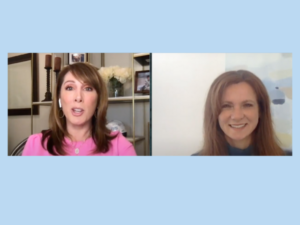We are often so focused on trying to fix our weaknesses that we neglect to nurture our strengths. It’s time to take the opposite approach and choose to see yourself as a leader—now, without changing who you are. Identifying, embracing, employing, and amplifying your leadership strengths can form the foundation of an incredible career.
As a first-time director with HP, Sandy Lieske found herself working on a program that was highly technically complex. Despite always having always relied on her strong technical skills, she felt thwarted. “I didn’t understand why things were so hard and why I felt so badly all the time,” Sandy says.
What happened next had a profound impact on her career. A manager on Sandy’s team took her aside and pointed out that the challenge she was experiencing was not with the technology. Her difficulties stemmed from managing change and aligning the group behind a clear vision of where it needed to go.
“This required a focus on influencing, which was not one of my top strengths,” admitted Sandy. Instead of continuing to try to fix that skills deficit, she enlisted a consultant to help her articulate a comprehensive vision for the program and then partnered with a change-management expert to help garner executives’ support. That vision became a rallying cry for the entire organization and the basis for a multi-year strategic roadmap. “The results were amazing,” says Sandy. Sandy went on to become a research and development executive with HP, and she now lectures in engineering management at a public university.
Trying to be someone you’re not, can be exhausting. Being a leader doesn’t require changing who you are when you craft a career that capitalizes on your strengths and allows you to bring your authentic self to work.
Sandy became a passionate advocate for a strengths-based approach to leadership, where you amplify your strengths, collaborate with people who have complementary strengths, and enlist help where you need it. It’s fueled her own development and that of countless others she has mentored. “When you internalize your strengths, it allows you to make the right career choices to position you to operate at your best every day,” says Sandy.
Your leadership strengths are your most powerful differentiators. Sandy recommends these steps to discovering yours, at any career stage.
- Identify your career-defining successes. Think about roles or situations in which you’ve done your absolute best, when you’ve been the most energized. “Look back at the times you’ve most enjoyed your work and when you feel you’ve made the biggest contribution,” Sandy says. Identify assignments that capitalized on your strengths.
- Don’t fixate on fixing weaknesses. Focusing on your weaknesses can be stressful and demoralizing, and it can deplete your confidence and self-esteem. Reframing how most of us would view weaknesses, Sandy says that it’s important to understand what your “bottom strengths” are, but you should not spend all your time trying to improve them. Candidly admitting that people skills are not among her top strengths, Sandy says, “Empathy is one of my bottom strengths, but someone on my staff had empathy in their top five.”
- Don’t swim upstream. If you’re in a job that doesn’t capitalize on your strengths, look for opportunities that do. As Sandy puts it, “Don’t swim upstream.” Have the courage to talk with your manager about augmenting your role or shaping it into one that aligns more closely with what you do best.
- Dare to declare your deficits. Once you move beyond the discomfort of what you don’t do well, you can look for people whose skills round out your deficits. Coming from that mindset, obstacles like Sandy’s challenging project become opportunities to collaborate with others who have complementary strengths. End result: Everyone gets to shine.
Don’t become indispensable for doing work that hides your potential, sells short your strengths, and will never allow you to shine. Claiming your value starts with understanding where your power comes from, and one of the best things you can do for yourself is recognize all of the ways in which you are already a leader.
Adapted from my book Woman of Influence: 9 Steps to Build Your Brand, Establish Your Legacy, and Thrive.
















